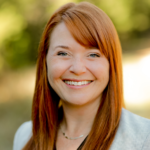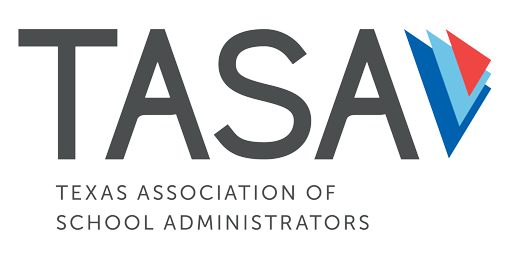by Amy Sharp
 This article originally appeared in the summer 2022 issue of TASA INSIGHT. Sharp is a National Board Certified Teacher (NBCT), serves as an assistant principal in Lake Travis ISD.
This article originally appeared in the summer 2022 issue of TASA INSIGHT. Sharp is a National Board Certified Teacher (NBCT), serves as an assistant principal in Lake Travis ISD.
In most learning organizations, people are encouraged to grow their emotional intelligence through self-awareness to maximize progress and partner better on teams. In his podcast, “The Future of Work,” Jacob Morgan recently explained that internal self-awareness is how we see our values, thoughts and emotions. When doing so, he explained we ask, “Why did I say that to a team member?” and “What made me say that to my team member?” Morgan details that external self-awareness is how others see us and encourages you to seek critical feedback that ultimately helps you improve.
Therefore, many organizations pursue this type of discovery to support personal and professional growth and to enhance emotional intelligence, performance, climate and culture system-wide. After all, as Simon Sinek notes on his podcast, “A Bit of Optimism,” “The ability to form partnerships is literally the thing that distinguishes the great from the good.” To start, self-assessments are often a launching point to growing emotional intelligence. Listed below are a few well-known self-assessments. Please note, however, that these assessments vary depending on the company and research foundations.
- Gallup Strengths
- Working Genius
- The Enneagram
- Business Chemistry
- 16 Personalities
- True Colours
- The Personality Compass
What Did I Learn?
Believe it or not, I have taken all of these assessments over the last 18 years of my service in education. Why? To be honest, how my teams partnered with one another was not always moving the work effectively. I was puzzled regarding various barriers to the relationships on my team and how they hampered our teams’ abilities to reach goals. I saw this pattern frequently on multiple campuses and districts I served. Some groups flourished, and others did not, even after seeing their strengths and areas to develop. There was a missing link, and soon I realized internal and external work still needed to be done.
With self-awareness, the goal is to balance internal and external self-awareness, or how you see yourself be the same way others see you. That aspect is vital to partner with teammates, and I hoped the stakeholders I was working with saw my values and purpose according to how I saw it. Morgan details in his podcast that “… when the two sides match, you can target areas for improvement and change how you interact with yourself and with others. Being able to master both sides of self-awareness is crucial for future leaders as they develop emotional intelligence.”
After seeing all of my variations of self in different assessments, I started to see familiar areas of celebration, appreciation, awareness and strength fully. Now that there is a shared understanding of self-awareness and self-assessment, let’s dive into what I learned about myself.
Strategic, Relator, Futuristic, Individualization and Learner, top five strengths
Working Genius of discernment and wonder Enneagram One, wing Enneagram Nine, so an Idealist
Guardian and Driver Chemistry
Architect or INTJ-T Personality
Green (34%) and Yellow (31%)
I am from the East.
Before you start wondering if I just wrote a bio poem, let us pause and reflect on what I learned throughout these assessments. As Patrick Lencioni explains in “The Six Types of Working Genius,” “If you want to be successful and fulfilled in your work, you must tap into your gifts. That cannot happen if you do not know those gifts.”
After some reflection, I noticed I am the same in every aspect of these assessments. What is unique is the season of life, climate and level of capacity I was in to hear, appreciate, apply and reflect upon the information to grow my self-awareness and emotional intelligence while partnering with my teammates. This work allowed me to reframe my failures to experience relief from shame. As Tom Rath says in “Strengths Finder,” “You cannot be anything you want to be, but you can be a whole lot more of who you already are.” In other words, I started to accept my limitations and embrace them on my teams.
Let me explain. In my 20s through the start of my 30s, I took the “Well, this is who I am” approach in even my most challenging climates. At that time, I did not see the need to work on who I was programmed to be; again, I simply embraced it. I embraced my individualism, and in some relationships, that backfired or left me confused after an interaction or experience. I started to learn how to show up for others on my team because of who I am.
This type of work allowed me to give myself and my team grace. It provided the self-awareness I needed to acknowledge and be intentional in areas my team and I had to grow instead of experiencing guilt. It gave my teams and me a plan on how to intentionally approach our goals with an action that was feasible and set us up for success.
I would be remiss not to mention that it takes a balance of professional reflection and space to accomplish an ideal state to show up fully. Being in a safe environment or climate where this process is modeled and valued systemically simply makes it easier for everyone to be authentic and full of grace. Remember, the goal of building emotional intelligence is to see how you show up in a safe environment.
This realization led me to my next critical aspect of the work; I learned to walk away when psychological safety and my value were no longer seen at the table or in the room. This work and discovery reminded me to “not abandon myself” (from Glennon Doyle, “Untamed”) but lean into who I am, celebrate it, and grow for myself and help others where that space and effort are appreciated and encouraged.
That is the heart of emotional intelligence, and if one person or team is the only one working on it, the organization cannot fully grow or partner on teams for kids. It cannot go from good to great.
Why is This Important as a District and Campus Leader?
Before establishing my values and starting this process, I needed to see the good, the bad, and the ugly of who I am to know how to intentionally show up for my stakeholders and be a better partner in our relationships. I asked, “What does my ‘best self’ look like?” “What climate do I strive and thrive in for students and our teams of stakeholders?” and “What barriers are holding me back from being my best self on our teams for our students?”
It’s essential to know who I am, and various self-assessments launched that journey of purpose and intention for growth. It also helped me see I did not need to feel ashamed if our team did not have the required skill set. It allowed me to embrace it, name it and be intentional in sharpening it.
As a district and campus leader, I encourage my teams to do the same type of work to grow our capacity and partnerships so we can accomplish our goals and lean into our purpose through the failures and gains. As Greg McKeown explains in “Essentialism,” “When we have clarity of purpose, it enables us to succeed at our endeavor.”
Because of this work, I am aware of my areas of growth and celebration, and the data then informs my values and infinite goals (from Simon Sinek, “The Infinite Game”). Because I experience peace of mind and a level of “knowing” (from Glennon Doyle, “Untamed”), I strive to support others around me in doing this work, too. Because, in truth, if leaders can help people in their organization reach their potential, they help each person, team and themselves.
I cannot say that one self-assessment is better than the other to grow emotional intelligence or that this effort finishes in a set amount of time. I can say that a common language and culture around who you are and allowing others to think through that process is a practical and necessary step for cyclical reflection and growth in an organization.
Identifying strengths and areas for development on teams supports hiring and recruiting staff practices. It allows teams to look at themselves and each other objectively to grow their capacity in partnering toward a common purpose and goal. Admittedly, my current campus teams are in the infant stages of this work with my principal. Yet, it is effective and gaining traction over time. After all, this effort is a beautiful, messy and cyclical process that involves care and candor throughout.
So, What’s Next?
In sum, “We need braver leaders and more courageous cultures,” as Dr. Brene Brown explains in “Dare to Lead.” As a campus and district leader, think through which self-assessments have the most value and alignment with your district’s leadership, hiring practices, and strategic goals. Why? Because self-assessments are effective in partnering on teams. But, do not stop there.
Decide if you have a budget for this work and create time and space for it on the calendar. If you do not have a budget and realize there needs to be, start deciding on the next steps to make it happen. Plan out what this effort can look like with intention into the next school year with your teams. Be clear on your why for the work. Know whom you need to be to show up for staff as they start their cyclical process of striving and thriving in your district. Because, as John C. Maxwell explained in “Leadershift,” “Teams either grow together or they grow apart.” Make a commitment to grow every day and then develop relationships with growing people will keep your growth on track.
The future of any organization can be found in the growth of the people who are part of it and lead it. Therefore, if Gallup is your go-to as an organization, decide what your teams lack in immediate strengths. Then, craft hiring questions to filter those strengths and agree on how to grow the team’s capacity through professional development and planning team building and self-awareness time for emotional intelligence and partnering on teams to flourish in your organization.
Most importantly, ensure that your upper and middle management teams align with self-assessment language and emotional intelligence in hiring practices. If you are in a situation where you realize your team or other teams lack a specific skill set, no problem. Start acknowledging pitfalls in the team and be intentional with creating a plan to hone in on skill set needs.
There is no shame in not having it all on a team, so be clear on when and how things will get done even when the team may lack an immediate strength. This effort will support how your organization is striving to grow your learning community’s emotional intelligence to better partner with your stakeholders and teams for kids.
MORE LEADERSHIP PERSPECTIVESWanted: Your Leadership Perspective
If you’re an experienced school leader and TASA member with some leadership perspective to share, email Dacia Rivers with a short description of your proposed article, and we may publish it in a future issue of INSIGHT and/or on the TASA website.


